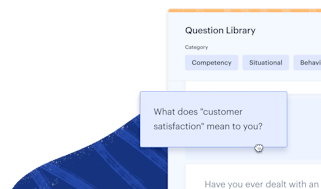3 Strategies for Scaling Up to 24-Hour Customer Service


Delivering 24-hour customer service is an exciting challenge to solve. It typically means your business is expanding or you are taking on larger customers.
Scaling a team to this level comes with some unique considerations that range from cost and location to language and local customer demands. The strategy you choose needs to take into account your customers' needs, the region or time of day at which your load is growing most, and your business goals and expansion plans.
Choosing a 24/7 support strategy
Start by understanding your customer needs. Are you meeting your expected service levels (SLAs) or are you having trouble meeting first response targets? Through what channels do your customers prefer their support? Are they less satisfied with remote or delayed service? Are there any language or cultural concerns with your support team? Questions like these can help you find the outcomes your customers need.
Once you understand your customer needs, choose a method of analyzing your caseload growth. As an example, here is a chart of case volume for two years of data. You can see from Year 1 to Year 2 there is clearly a significant rise in incoming cases. This data can help you decide where to focus your support team growth in Year 3.

Assuming your team works 8 a.m. to 5 p.m. EST, comparing Year 1 to Year 2 this chart shows a 50% increase in load year-over-year during those working hours. Notice that from 5 p.m. to 8 p.m., the load is growing even faster at a rate of 70%. And from 3 a.m. to 8 a.m. it is growing still faster at an 80% increase. As a rough indicator, this data shows a faster expansion of caseload coming from Europe and the PST timezone. This data is valuable as you build a new strategy.
3 strategies for rolling out 24-hour customer service
Once you understand your customers’ demands and analyze the timeframes or regions that need the most attention, turn to the goals and expansion plans of your business. Use those plans to help you create a strategy for delivering 24/7 support to your customers. Here are three strategies to consider.
1. Expand your co-located team
Typically, in-house strategies are used when there is no precedent of remote employees, a product/service complexity would hinder remote employee success, or the growth is in response to client needs rather than strategic sales territory growth. Aaron Billings, Client Support Manager at Salesloft, used this method. "Since our platform was new in Europe, there were more issues than usual,” Aaron shared with us. “And since our support team wasn't available during European hours, it left our customers without support for the platform."
Having support reps work shifts or implementing an after-hours pager system are two ways to solve this challenge. Both have advantages, such as reduced training time and access to the same resources and people. It is also easier to instill a company culture when there is co-location. However, as Aaron found out when he used an in-office strategy, "The biggest negative was the impact it had on the agents. They were burned out fairly quickly." If team members can earn the same pay for more desirable hours elsewhere inside or outside your company, they may leave.
An often-used middle ground for not having people physically in an office 24/7 is to offer a pager service where some or all customers have access to a person who is notified whenever a case is opened after hours. Paging is useful during the transition phase of an expanding company, where the caseload doesn't require a full-time in-office person, but some coverage is still required. This model typically comes with some compensation in the form of a stipend for being ”on-call” and then hourly overtime pay should a ticket be opened.
2. Add employees remotely or in dispersed offices
When deciding whether to start a remote team, a key consideration is your company's expansion plans. If your company has plans to expand in an already chosen location, first consider hiring remote employees there. If there are no plans, a remote employee strategy is a useful option. Either of these methods can be used when customers require in-time or in-language support.
Michael Redbord says that HubSpot used this strategy and found significant benefits by hiring outside of their headquarters: "We hired a pioneering team of four that set culture, the pace of work, and customer tone for the region. These were super important hires." The team could work local business hours and could help you learn about local cultures and laws. "As we moved to an international model, we made many mistakes and learned a lot. Lessons included: Employment laws in countries such as Singapore, office and regional cultural differences, and that, while local leadership is key, they are very hard to hire."
Local versus remote leadership is significant. While remote leadership of the employees helps you to consolidate decision-making and helps to foster a more collaborative global team, it can harm the work-life balance of that leader or the team. Meetings are often held at inconvenient times, one-on-ones become more difficult, and it adds to travel budgets. Local leadership helps to remove those barriers, but it also increases the need for effective communication between leaders, requires more effort to ensure company culture is shared effectively, and can start to hurt morale due to lack of inclusion. Remote employees need engagement with their in-house counterparts to foster success. Leaving them out of projects, discussions or decisions will cause a barrier to success. When done correctly, Redbord says, "international support is a driving force of growth and supporting our customers in local language and culture is huge. We can hire better, faster, and more diversely with a bigger global presence."
3. Outsource or partner
External-hire strategies can be used to solve business problems ranging from lowering costs and scaling to expanding geographical or language reach of your team. Outsourcing is also useful for needs that would be difficult to staff with a more traditional hiring model. At a previous company, Charles Myers, now at Sprout Social, implemented a 24/7 outsourcer to add a seasonal scale model, expanding coverage x12 over a six-week window, which was critical for their customer experience — something that would have been difficult to do internally.
These strategies can be as simple or as advanced as your customers' needs demand. The services provided range from a front-line triage team for achieving quick first responses, to solving simple, documented cases and escalating to backline support as necessary, all the way to full end-to-end customer care and cross-functional collaboration. The services will vary based on the vendor you choose, but overall, Myers says that outsourcing "gives you a safety net for new/risky products, is easy to launch, and has a lower risk to the business."
While outsourcing is typically thought of as a cost-saving measure, a partner strategy can also save you from infrastructure, hiring, and training costs. These savings may be seen as an advantage, but you should consider your customer experience when making a choice. Myers observed that outsourcing made it "hard and expensive to control quality and to hire truly passionately aligned employees, which leads to higher attrition than in-house, flexible teams."
Potential downsides for external strategies include language barriers, job model expectations, training, and ability to embrace your internal process, tooling, customs, and culture. These can be overcome by careful planning ahead of time. Ensure your plan covers:
Any SOC2, GDPR, or other legal concerns that may exist.
Allowing external staff the access they need to your tools and resources, while limiting any sensitive data.
A budget for onsite team visits, both technical and leadership, as well as swag or company culture considerations.
Adjusting your training to accommodate the different needs of a team that may not have access to resources or relationships with people within your organization.
To pick the right fit for your needs, always ensure you have clear requirements from both your company and from customer perspectives. Outsourcing and partnering each require different considerations, but, implemented correctly, provide high value for the right use cases.
How will you implement 24-hour customer service?
Seeing your business flourish and expanding your offerings wider helps to increase diversity, engagement, and excitement across your organization. Being part of a global or 24/7 expansion for a company can be an excellent learning and challenging exercise for leaders and individual contributors alike.
All of the above strategies can help solve a variety of business needs and ensure your customers have an incredible customer experience, no matter their time of day or location. The correct solution may also be some combination of strategies necessary to make your customers successful. Vanessa Subramaniam, Support Manager at Points Travel, did just that: "We chose a blend of in-office shifts and outsourcing. The outsourced team focused on front-line cases and the in-office shifts were for our escalations team, who had more experience and enhanced access."
No matter what, if you start by listening to your customers' requirements, making data-driven caseload observations, and aligning all of that with your company's expansion plans, you will have the information you need to choose which strategy will make you most successful.


